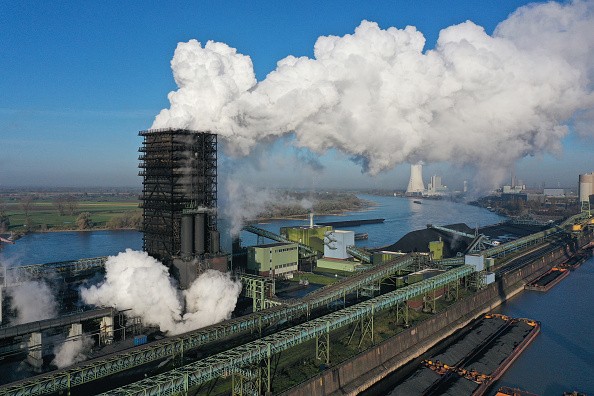The University of Cambridge researchers previously demonstrated that biological catalysts, or enzymes, can create fuels cleanly by using renewable energy sources, although at low efficiency.
Also, by using sophisticated materials and ultrafast laser spectroscopy, a research team led by Lund University in Sweden demonstrated how solar power can transform carbon dioxide into fuel.

Converting CO2 using catalysts
Enzymes have developed over millions of years to be incredibly efficient and selective, and they're perfect for fuel-production since there aren't any undesired by-products.
However, enzyme sensitivity presents a unique set of obstacles, and their technique accommodates for the sensitivity, adjusting the local environment to match the enzyme's optimal operating circumstances, as sated by Dr. Esther Edwardes Moore, first author of the PNAS research from Cambridge's Yusuf Hamied Department of Chemistry, per ScienceDaily.
The researchers designed a mechanism to improve CO2 electrolysis using computational approaches.
Compared to the present benchmark solution, the level of fuel generation rose by 18 times when using the enzyme-based system.
To further enhance the local ecology, the researchers demonstrated how two enzymes may collaborate, one providing fuel and the other managing the environment.
They discovered that introducing another enzyme sped up the processes, improving efficiency while decreasing undesired by-products.
How copper helps the conversion of CO2
A bed of carbon is used to support copper atoms in the new catalyst. Those copper atoms are dispersed as if they are socially distancing themselves.
When electricity passes through the catalyst, groups of distant copper atoms link together to create clusters of three or four atoms by directing intense X-rays at them.
According to the scientist at Argonne National Laboratory in Lemont, Illinois, Di-Jia Liu, and his team could "watch the chemical process as it occurs."
These clusters activate the catalyst, which aids in the reaction of CO2 with water. CO2 is now broken down into carbon and oxygen atoms. And the water atoms - or H2O atoms - separate into hydrogen and oxygen atoms.
All of these liberated atoms are now rearranged to make ethanol (C2H6O).
Read more: Climate Change Solution? Researchers Convert Carbon Dioxide Into Fuel Using Nanoparticles, Light
Converting CO2 using solar energy
The amount of sunlight that strikes Earth in one hour is nearly equivalent to humanity's total energy use over a year in which worldwide carbon dioxide emissions are rising as well.
According to Technology Networks, many researchers are interested in using the sun's energy to collect greenhouse gases and transform them into fuel or another useful molecule.
There is still no good solution, but an international research team has discovered a plausible path ahead.
The team investigated COF - covalent organic framework - a porous organic substance. The material is well-known for its ability to absorb sunlight very efficiently.
They succeeded in converting carbon dioxide to carbon monoxide without using any more energy by adding a so-called catalytic complex to COF.
These findings are put to use by Tönu Pullerits and Kaibo Zheng, chemistry researchers at Lund University, who believe that the finding can be utilized in the future to produce larger units that can be used on a worldwide scale to capture carbon dioxide from the atmosphere and convert it into fuel or chemicals with the aid of the sun.
That might be one of several answers to the current climate issue.
© 2026 NatureWorldNews.com All rights reserved. Do not reproduce without permission.





